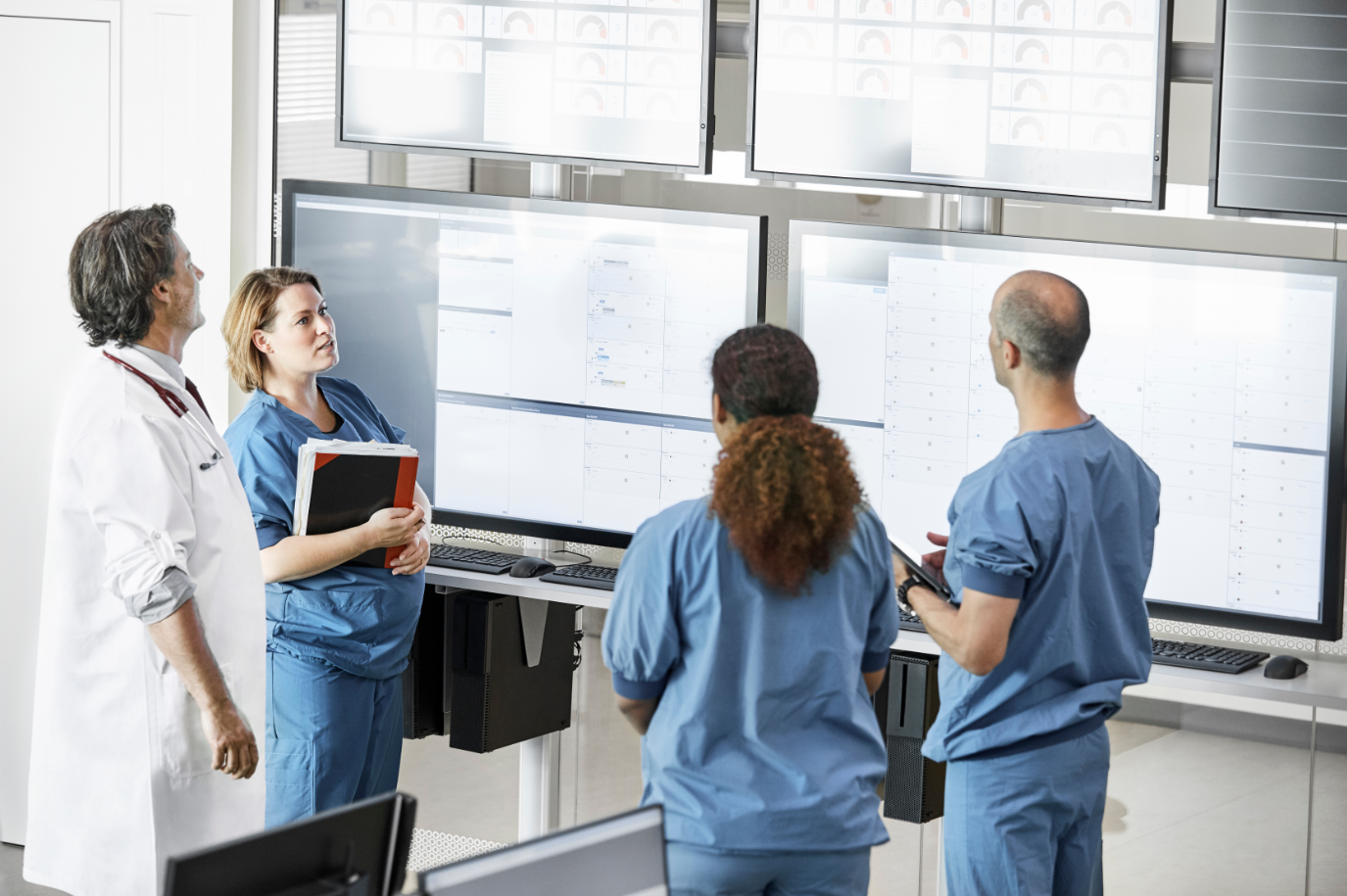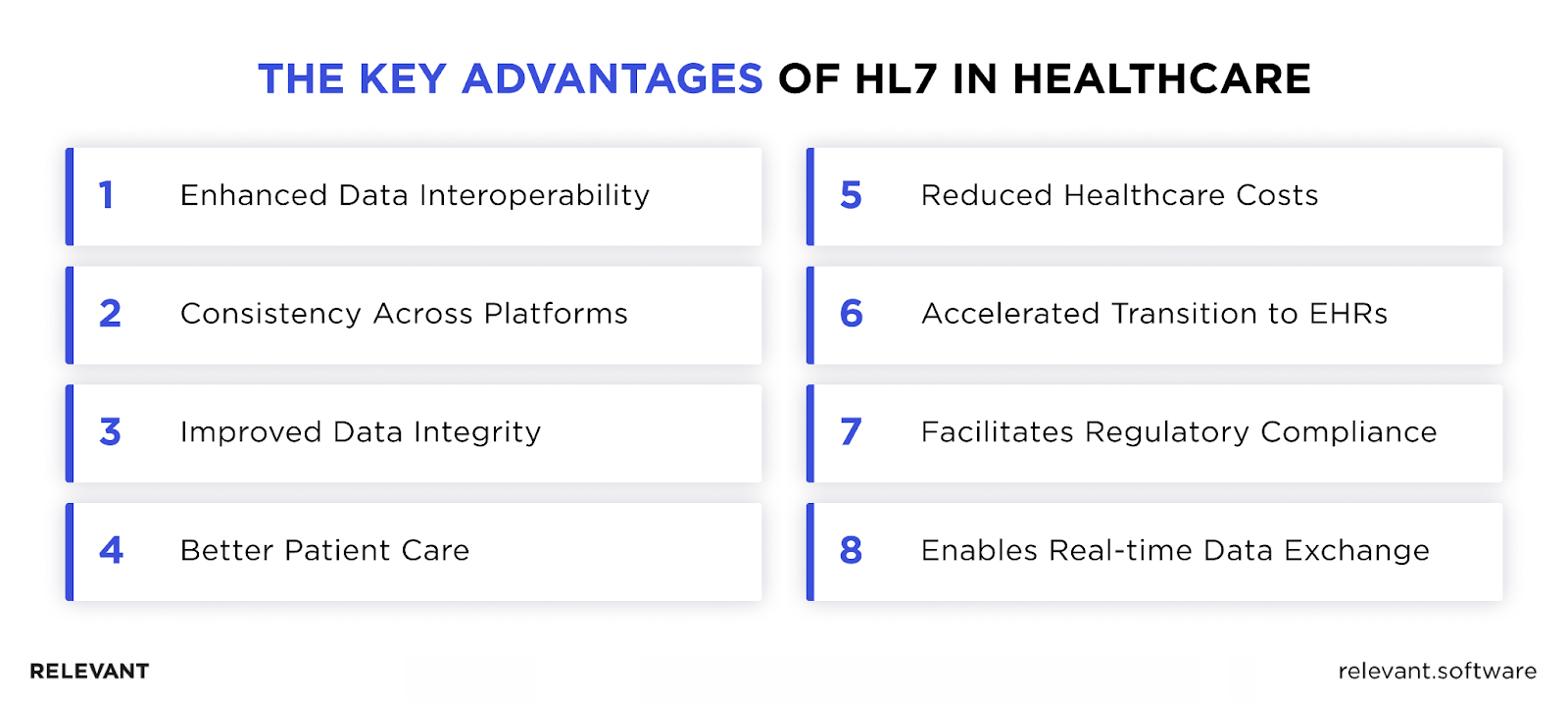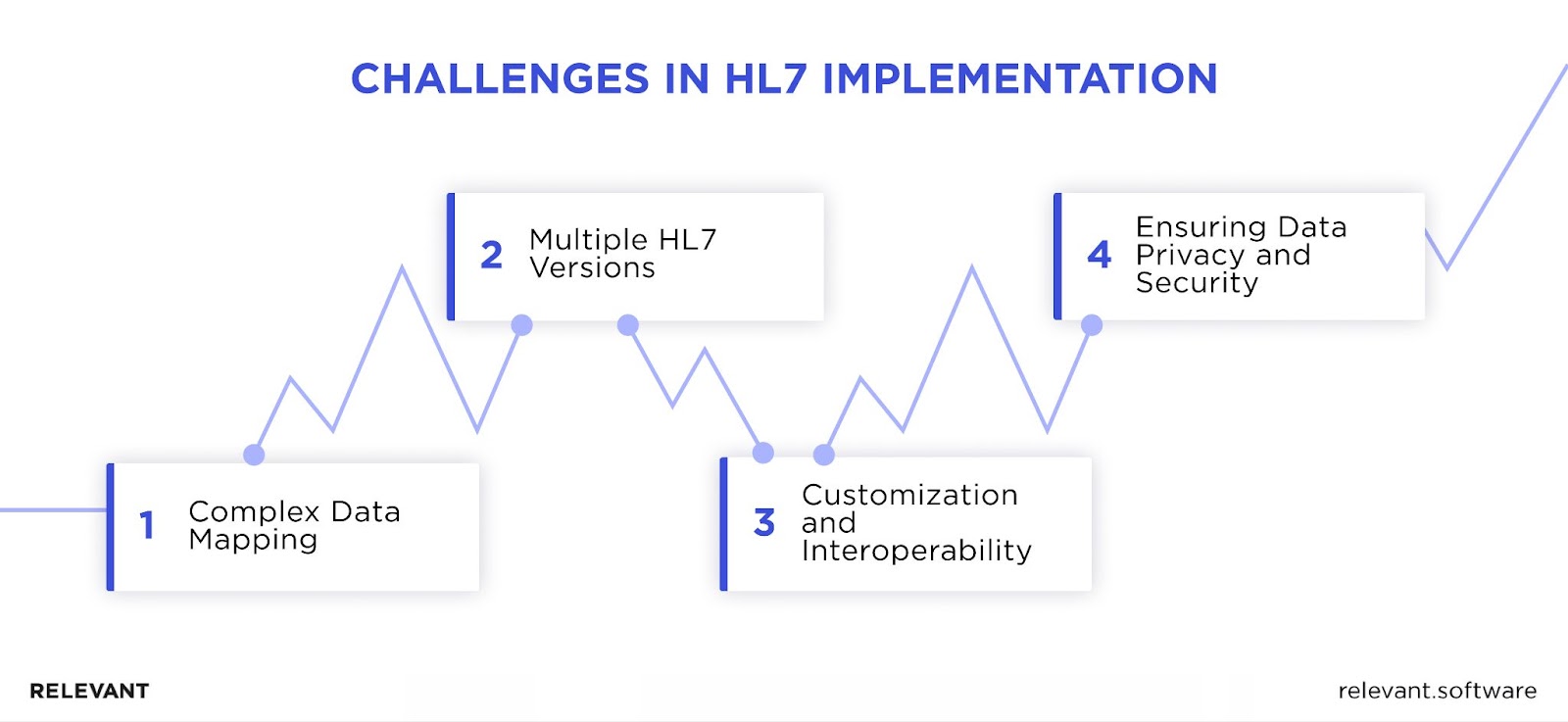What is HL7’s Pivotal Role in Healthcare Data Sharing?
Updated: June 4, 2025
Today, as healthcare is increasingly shifting towards a digital model, seamless connectivity between our diverse healthcare information systems is more important than ever. HL7 stands out as the cornerstone in this evolving landscape, providing a standardized approach that allows electronic health record systems to engage without a hitch. Fundamentally, it’s all about leveraging healthcare data, ensuring it’s not only accessible but also usable and reliable.
If you’re wondering why this is worth your attention, here’s the lowdown: without HL7, we risk compromising the efficiency and patient-centric approach in healthcare. Imagine a world where essential data gets misinterpreted or urgent insights are delayed— that’s what we face without HL7. Such gaps could mean the difference between precise diagnostics and significant oversights in patient care.

We provide companies with senior tech talent and product development expertise to build world-class software. Let's talk about how we can help you.
Contact usInterested to discover deeply what is HL7’s impact on the healthcare sector? Scroll down and read our in-depth article, where we peel back more layers of this game-changing evolution.
Table of Contents
What is HL7 in Healthcare?
There are many tools and systems at work behind the scenes in today’s digital healthcare. Think of Hospital Information Systems (HIS) for logistics, Electronic Medical Records (EMR) for patient histories, Lab and Radiology Information Systems (LIS & RIS) for diagnostics, and PACS for imaging.
Yet, these tools sometimes struggle to interact due to their distinct “languages”. Despite the extensive use of programming to manage healthcare data, information exchange remains inflexible, often leading businesses to grapple with data misinterpretation.
Consequently, as healthcare organizations implement software for billing, patient record maintenance, etc., and gather data from medical apps, and various devices, the demand for smooth data integration grows. For these entities to attain full interoperability, all these systems must interact harmoniously, ensuring effective data exchange and retrieval.

That’s where HL7, with its mandatory guidelines, steps in to provide a standardized protocol that streamlines how healthcare software solutions converse. It ensures uniformity not just in language, but also in content and structure regardless of what type of APIs or communication paradigms an organization utilizes.
Many view HL7 as a behind-the-scenes blend of code and hardware, enabling web platforms to showcase data and locate the requisite site. Moreover, HL7 standards lay down a blueprint, ensuring healthcare institutions generate consistent data accessible to all authorized entities.
Basic Architecture of HL7
Dive deeper into the question, “What is HL7 interface?” you’ll move beyond the misconception that it’s just a minor component in a larger system. Its architecture, underpinned by the HL7 Standard Protocol, is a masterpiece of design precision.
The protocol comprises globally acknowledged guidelines, ensuring healthcare data applications communicate consistently and uniformly. It’s more than a mere blueprint; it’s the foundational bedrock on which the entire system is built.
What distinguishes HL7 from other standardizations is its balance of flexibility and specificity. Far from being a one-size-fits-all, HL7 offers tailored solutions, accommodating the unique demands of diverse healthcare systems, all while upholding unwavering communication integrity. HL7 messages, segmented into various fields, are meticulously layered, with each layer serving a vital purpose. These seven layers, spanning from the tangible physical connections to the application interfaces, operate in seamless cohesion.
Detractors might label this architecture as overly intricate or inflexible. But such views miss the broader picture of what is an hl7 interface and on hl7 integration meaning. In the realm of healthcare, where stakes are incredibly high, ambiguity is not an option. The HL7 framework not only emphasizes accuracy but insists upon it.
HL7 Trigger Events
We mentioned HL7 messages and their unique, layered structure. Now, these aren’t just random assortments of data. They’re meticulously crafted in response to something we call a “trigger event.” But what’s that, you ask?
Well, picture a real-life scenario in the healthcare realm, something that nudges systems into action, prompting data to shuffle between them. That’s your trigger event, as laid out by the HL7 standard.
Each of these events gets tied to a specific, structured message, shedding light on the kind of data it’s supposed to carry to support that event. To paint a clearer picture, let’s explore an example. Consider the trigger event labeled A04, which essentially means “Register Patient.” Its corresponding HL7 message would be a meticulously designed set of segments, each playing its part to ensure seamless patient registration.
The Main HL7 Standards and Protocols
When we talk about the hl7 standards definition, we’re essentially discussing the rules of the game for healthcare data exchange. These rules ensure that different medical systems can ‘talk’ to each other, even if they initially spoke different ‘languages’.
So, what’s the core meaning of HL7 in healthcare? Simply put, it’s about seamless communication in healthcare’s digital world. Let’s delve into some pivotal HL7 standards that take center stage:
- Version 2.x/3 Messaging Standard: Think of this as the common language for health transactions, ensuring various systems can exchange info effortlessly.
- Clinical Document Architecture (CDA): Ever wondered how clinical documents maintain their structure and meaning across systems? This XML-based standard is the answer, defining the blueprint for exchanging such documents.
- Continuity of Care Document: Another XML standard, but this one zeroes in on patient summaries, ensuring these critical documents are consistently structured and easily exchangeable.
- Structured Product Labeling: Dive into the specifics of human prescription labels, and this XML standard stands tall, outlining how such info should be presented.
- Clinical Context Object Workgroup: Beyond just data, we need applications to sync in real time, especially at the user interface level. This protocol makes that magic happen.
- HL7 Version 2 Product Suite: In essence, this is the toolkit that empowers different medical systems to exchange a plethora of data types.
Protocol HL7 variants
Throughout its journey, Health Level Seven International hasn’t merely rested on its laurels. They’ve continuously innovated and evolved. From the initial stages of HL7v1 to the more advanced offerings like HL7v2, HL7v3, and the impressive FHIR substandard, they’ve been at the forefront of change. So, you might wonder what evolution has been like and how each iteration has raised the bar. Let’s dive in and unpack:
- HL7 Version 2 (v2): Serving as the most widely adopted standard, v2 focuses on the electronic exchange of clinical and administrative data. Although not a singular protocol, its various versions are utilized across different healthcare settings globally, ensuring real-time data sharing and improved care coordination.
- HL7 Version 3 (v3): An evolution from v2, this standard offers a more robust framework. It introduces the Reference Information Model (RIM) and relies on XML for data transport. Designed with greater specificity and flexibility, v3 targets a more uniform data representation across the healthcare spectrum.
- Fast Healthcare Interoperability Resources (FHIR): Positioned as the future of healthcare interoperability, FHIR combines the best features from HL7 v2, v3, and CDA while adding web technologies’ versatility. It uses a modular approach, simplifying integration, reducing complexity, and accelerating the adoption of interoperability standards.
FHIR vs HL7
Imagine if the healthcare data exchange world were a tech store. In one corner, you’ve got the classic, reliable HL7 – think of it as a trusted brand that’s been around for ages. It’s your go-to for solid, dependable tech, having laid down the rules and blueprints for how health data should be shared and communicated for years. And picture FHIR as the latest, most spectacular gadget from that trusted HL7 brand.
Unlike the older models, the FHIR standard, a blend of specification and open web API leans on popular web techs like XML, JSON, and REST, simplifying HL7 hospital integration. It harnesses the best of modern tech, allowing different chunks of healthcare info to click together like LEGO pieces. The whole idea? Making sure health data doesn’t just move but flows smoothly.
Moreover, this protocol, centered on “resources” as foundational elements, is designed for easy adoption by developers. Global governments are championing healthcare interoperability, with Germany mandating FHIR interfaces by 2023 and the U.S.’s 21st Century Cures Act promoting FHIR-based data access.
Read also: HL7 vs FHIR
The Major Benefits of HL7 in Healthcare
HL7 stands as the foundational pillar for health data interchange, positioning itself at the forefront of patient care transformation. But beyond the high-level praise, what real-world advantages does the HL7 framework confer?

Enhanced Data Interoperability
One of the principal challenges in healthcare has always been ensuring different systems can “speak” to each other. HL7 bridges the gaps, allowing diverse systems to communicate fluently, thereby streamlining operations and improving patient outcomes.
Consistency Across Platforms
No more decoding or interpreting data from one platform to the next. With HL7, healthcare professionals can anticipate a uniform data presentation, regardless of the underlying system.
Improved Data Integrity
By adopting a standardized communication protocol, the risk of data corruption or loss during transfers is significantly reduced. It ensures that every piece of information remains intact and reaches its destination as intended.
Better Patient Care
At the heart of healthcare is, and should always be, the patient. HL7, by streamlining data exchange, empowers medical professionals to have a holistic view of patient history, ensuring accurate diagnosis and timely interventions.
Reduced Healthcare Costs
The fallout of miscommunication and system incompatibility doesn’t just disrupt workflow; it drains resources. HL7 acts as a financial panacea, drastically cutting avoidable expenses, minimizing redundancies, and ensuring that every penny spent in healthcare is a penny well-spent.
Accelerated Transition to Electronic Health Records (EHRs)
As the industry pivots towards EHRs, HL7 propels this transition at breakneck speed. With a standardized framework, migrating from paper to digital records becomes less of a Herculean task and more of a streamlined process, ultimately advancing healthcare into the modern era.
Facilitates Regulatory Compliance
Healthcare doesn’t operate in a vacuum; it’s bound by stringent regulatory mandates. And while these regulations aim to uphold patient safety and data security, compliance can be confusing. Enter HL7, which simplifies this maze. With its guidelines and protocols, healthcare institutions can navigate the complex seas of regulations with a reliable compass.
Enables Real-time Data Exchange
In critical healthcare scenarios, time isn’t just money—it’s life. HL7 fortifies real-time data exchange, ensuring that health data is exchanged instantaneously. The upshot? Prompt decisions, timely interventions, and lives saved.
Challenges and Solutions in HL7 Implementation
In the business of healthcare, HL7 implementation feels a bit like organizing a dynamic boardroom meeting where the agenda keeps shifting. It’s a challenge, no doubt, but it’s one that we’re tackling with both strategy and agility. So, let’s break down the specifics and see how we’re streamlining the process.

Complex Data Mapping
The Challenge: Think of HL7 as the interpreter for diverse healthcare systems. Each system, like a seasoned executive, has its own language and nuances. Now, how do we ensure clarity when there’s no direct translation for certain terms or procedures?
The Solution: It’s not just about having a glossary on hand; it’s about developing a robust translation strategy. With state-of-the-art interface engines and ongoing training for our IT teams, we’re ensuring that even the most complex data can be understood across the board. It’s an intricate dance, but we’re choreographing it with precision.
Multiple HL7 Versions
The Challenge: HL7 isn’t a static standard; it’s constantly updating, much like the evolving strategies in a dynamic market. This brings in different versions that might not always be on the same page—imagine a business deal where partners refer to different contract versions.
The Solution: Consistency is key. By homogenizing the versions of HL7 we deploy and integrating tools that bridge any disparities, we ensure that the communication remains transparent. It’s not merely about adaptation; it’s about synchronized progression.
Customization and Interoperability
The Challenge: Different healthcare setups have unique needs. While one size might fit most, it certainly doesn’t fit all. How do we respect individual needs without breaking the universal conversation?
The Solution: Think of HL7 as flexible enough to allow some tweaks here and there. HL7 offers a sturdy framework, yet it allows for those little customizations ensuring each health system retains its unique particularities while staying true to the broader formula of interoperability.
Ensuring Data Privacy and Security
The Challenge: In an age where data is gold, safeguarding this treasure, especially something as sensitive as health data, is paramount. How do we ensure that while data flows freely, it’s also shielded from prying eyes?
The Solution: It’s like building a fortress around our treasure. HL7 standards emphasize rigorous security protocols and privacy measures. Through state-of-the-art encryption, continuous monitoring, and stringent access controls, HL7 ensures that patient data isn’t just accessible—it’s protected.
What is HL7: Final words
These challenges are real, but with determination or a reliable healthcare software development and medical website development partner, they can’t stop you in your digitalization journey. And we at Relevant are ready to become such a trustworthy IT consultant and HL7 FHIR integration services vendor for you.
By offering the quickest, most straightforward, and most secure path, we empower your healthcare organization to effortlessly integrate with leading healthcare systems worldwide. Contact us to find out how we solve the issue of data exchange and interoperability for you.
Read more about healthcare RFID and the differences between RFID and traditional barcodes.
FAQ
Our core services:
Do you want a price estimate for your project?
Do you know that we helped 200+ companies build web/mobile apps and scale dev teams?
Let's talk about your engineering needs.
Write to us











